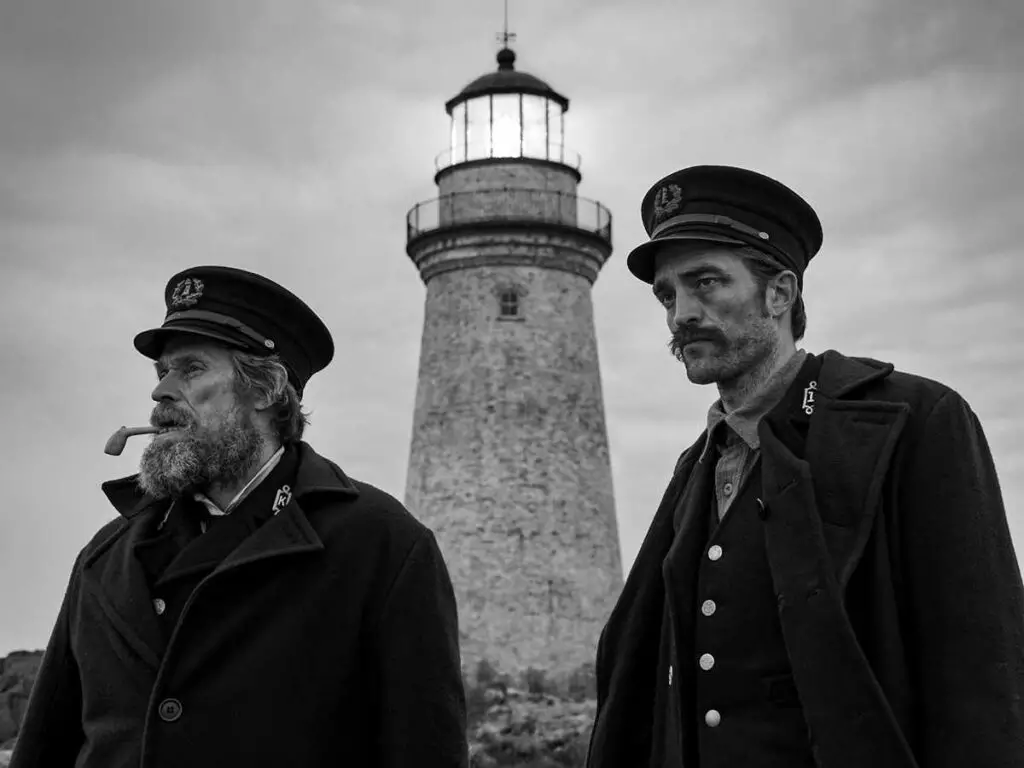Mexican filmmaker Guillermo del Toro’s spectacular cinematic universe is filled with tales of fantasy, supernatural, monsters, horror and mythic characters. The milieu of his films depicts real-world settings with monstrous creatures serving as a metaphor for our evil, dark side that we often bury within our subconsciousness.
Del Toro began his career as a director with the vampire film Cronos (1993). With his Spanish-Mexican dark fantasy epic El laberinto del fauno (Pan’s Labyrinth, 2006), he landed 6 Oscar nominations and 3 awards, cementing his reputation as a maverick filmmaker. The filmmaker won an Academy Award as Best Director for the romantic fantasy The Shape of Water (2017). He became one of the key figures of the Mexican triumvirate consisting of Alejandro González Iñárritu and Alfonso Cuarón, who are responsible for enhancing the artistic quality of contemporary Hollywood Cinema.
Here are 10 Guillermo del Toro’s favorite films that he mentioned during a poll conducted by the Sight and Sound Magazine in 2012.
1. Nosferatu: A Symphony of Horrors (1922)
F.W. Murnau’s Nosferatu was one of the most popular German films made during the era of silent cinema. The 94-minutes long film employs elements from German Expressionism and incorporates the influence on architecture and art in the narrative design. The Gothic masterpiece heralded innovative stylistic elements and techniques within the genre of horror films and mesmerized the audiences with its innovative storytelling.
Nosferatu is loosely based on Bram Stoker’s 1897 novel Dracula. The film is made with such an economy that it proves that sometimes all you need to make a horror film is the creative use of camera angles and the judicious balance between light and shadow. The gruesome use of black and white images and silhouettes creates a terrifying bone-shaking viewing experience. Over the years the film has earned its rightful place in Gothic horror folklore.
2. Greed (1925)
Erich von Stroheim’s Greed is a tale about how oppressive forces play a key role in the decay of moral values and corruption of the soul. Set at the turn of 20th century San Francisco, it centres around three primary characters. McTeague (Gibson Gowland) is an illiterate man with a cruel and unrestrained attitude. His wife Trina (ZaSu Pitts) is a greedy and obnoxious lady. Their friend Marcus Schouler (Hersholt) works in a veterinary hospital and is equally vile in nature. All of them had to encounter an unfortunate fate due to their immoral ardour and greed for gold.
Based on Frank Norris’ novel McTeague, Greed is one of the most intriguing gems of the silent era that remains a classic tale of human conditions in a savagely brutal universe. The original length of the films was around ten hours long. But the released version of the film is only one hundred and forty minutes long.
3. Frankenstein (1931)
James Whale’s Frankenstein was one of the first films in the history of world cinema to immortalize the eponymous character of Mary Shelly’s novel. The narrative of the film centres around a maniac doctor, Henry Frankenstein (Colin Clive), who successfully restores life by stitching together random body parts from recently deceased corpses and transplant it with the brain of a criminal. The result is the creation of a monster (Boris Karloff) that is beyond any mortal’s control.
As a film belonging to the genre of Gothic Horror, Frankenstein has earned cult status. The soundtrack of the film composed by Bernhard Kaun greatly helps the viewers empathize with the plight of the monster. The film highlighted how mankind’s megalomaniac obsession with science and technology can result in mayhem.
4. Freaks (1932)
Tod Browning’s Freak is a bizarre black-comic melodrama that can also be categorized as one of the masterpieces in the horror genre of early cinema. The story of the film is set within the world of a circus troupe. The film boasts of casting real-life characters with all manner of physical deformities to bring authenticity to their roles. The film tells the story of a cunning trapeze artist Cleopatra (Olga Baclanov), who seduces a midget Hans (Harry Earles) for his money as she maliciously tries to reach the higher ranks in the group.
Tod’s treatment of the film makes Freaks a very humane movie that triumphs in making the ‘freaks’ appear normal without making them appear as condescending individuals. On its release, the film was heavily criticized. But in the history of exploitation cinema Freaks will always occupy a unique position.
5. Modern Times (1936)
Charlie Chaplin’s Modern Times delivers tricky commentary on class struggle during the Great Depression and expresses a serious socialist critique of twentieth-century society. The film narrates the tale of a factory worker Little Tramp (Charlie Chaplin) and his struggle to cope in the modern industrial society with the help of a young homeless woman (Paulette Goddard). The film explores the themes of alienation caused by the industrial age, the cruel outcome of poverty and the harsh prospect of an economy at war with the machines.
With Modern Times, Chaplin stepped into a new phase of his journey as a director and actor. He developed a critical outlook towards society and also brought finesse in his aesthetics along with political awareness. But what makes the film a timeless entertainer is the sophistication with which comedy and the theme of the struggle of populist working men are blended within the narrative.
6. La Belle et la Bête (1946)
La Belle et la Bête, directed by Jean Cocteau, is a dark and lyrical fairy-tale where the true love of a beautiful girl Belle (Josette Day), melts the heart of a feral but gentle beast La Bête (Jean Marais). The dramatic events of the film are built upon the premise where Belle takes her father’s place as the prisoner of La Bête, who wishes to marry her. Also known as Beauty and the Beast, the film is adapted from a well-known fairy tale by Jeanne-Marie Leprince de Beaumont and is considered a landmark in motion picture fantasy.
Made immediately after WWII, the film provided the French audiences with a rich, enticing fantasy, and made for an appropriate staple to escape the post-war slog. According to Del Toro, it is one of the most magical films ever made, one that truly is in love with the sublime, sophisticated, Freudian quality that a fairy tale really has.
7. Shadow of a Doubt (1943)
Alfred Hitchcock’s Shadow of a Doubt is a psychological thriller set in the small town of Santa Rosa, North California, and depicts how the members of the Newton family have to face difficult situations when one of their members, Charlie Newton (Joseph Cotten) comes back to the town. Charlie has been suspected by the authorities as the infamous “Merry Widow Killer,” a criminal wanted in connection with the deaths of several rich widows.
From the beginning, Hitchcock crafts the character of Charlie as a reticent than a deceitful individual and Joseph’s charismatic performance breathes life into the role. The tension in the film engages our involvement with the story and stays long after the end credits. Hitchcock was a master of the classical Hollywood compositional style and the technical excellence of the film comes largely from its visual design.
8. Los Olvidados (1950)
Luis Buñuel’s Los Olvidados narrates the tale of a group of teenagers residing in the festering slums of Mexico City. Due to the lack of education and poverty these young boys are drawn into the world of crime. However, Pedro (Alfonso Mejía), dreams for a better future for himself. His aspirations are gradually corrupted and destroyed by people close to him.
Buñuel’s narrative approach is an unflinching examination of how the poor teenagers prey on one another and don’t hesitate to kill their friends for selfish reasons. He does not shy away from portraying the juveniles as immoral creatures and holds them responsible for their wrongdoing and not society. As a study of lust, greed, vengeance and despair Buñuel brings a pitiless and brutal approach to his neo-realistic tale.
9. 8½ (1963)
Federico Fellini’s 8½ is a hyper-realistic poetic extravaganza, where the viewers participate in the memories and dreams of Guido Anselmi (Marcello Mastroianni), a popular Italian filmmaker suffering from a creative slowdown. Tullio Pinelli, Ennio Flaiano and Brunello Rondi have been credited as co-writers of this forbidding fable of a modern man. But the plot of the film is based on the personal experiences of Fellini as a child and years of working in the film industry.
The narrative and visual design of the film is full of symbols and allegories. The stylized visual approach of the film never overpowers the emotional content of the story. Nino Rota’s music score helps in creating a wide range of styles and modes, enriching the themes of the film. Engraved with a distinctive maker’s mark 8½ is undoubtedly one of the best timeless icons of cinematic wonder.
10. Goodfellas (1990)
Last but certainly not the least on Guillermo del Toro’s favorite movies’ list is Martin Scorsese’s classic crime drama. Goodfellas looks at Mafia life in New York City from 1955–80 through the eyes of three gangsters, Jimmy Conway (Robert De Niro), Henry Hill (Ray Liotta) and Tommy DeVito (Joe Pesci). The film is based on the non-fiction book Wiseguy by Nicholas Pileggi, who had also collaborated with Scorcese on the screenplay. In order to bring authenticity to the narrative, an infamous crime in the ’80s has also been incorporated in the script. It helped in creating a multi-layered study of the three characters and the culture that shaped their lives.
Goodfellas brings an extension of Scorsese’s ethos for the American gangster that began with Mean Streets (1972). But here the treatment of the subject is handled from a mature and subtler perspective. Intricate, volatile, and scathingly entertaining, Goodfellas is one of the most adept triumphs in the crime genre powered by stunning performances.
Conclusion
Another list of Guillermo del Toro’s favorite movies appeared this year in IndieWire. Eleven films in the list are part of The Criterion Collection and have been restored with high-end technology. Films from the last decade such as David Lowery’s A Ghost Story (2017), Alfonso Cuarón’ Roma (2018) and Fernando Frías de la Parra’s I’m No Longer Here (2020) also made it to the list. Watch them to understand how the gleaming imaginative aesthetic of these films have shaped del Toro’s style and form.
Read: Pinocchio (2022) Review: A Playfully Grim Critique of Mussolini’s Regime




